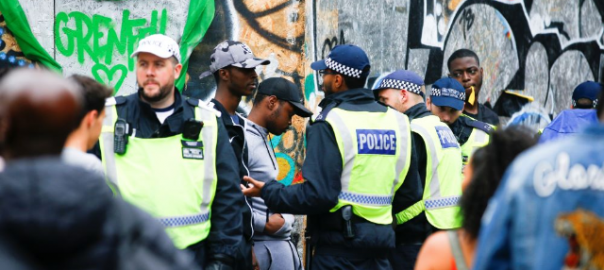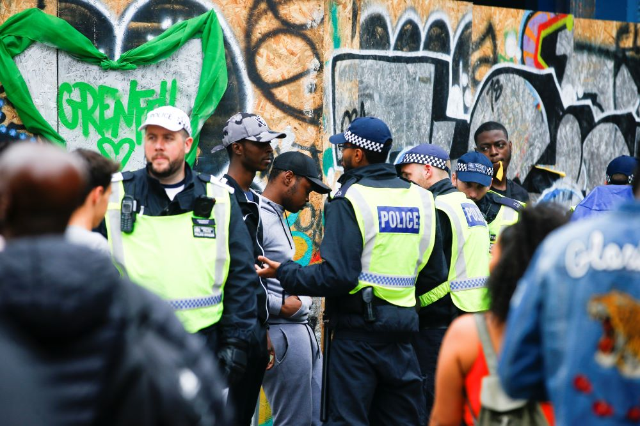| The Met has overhauled its ‘Gangs Violence Matrix’ database following a legal challenge by human rights organisation, Liberty. The tool is used by the police force to identify and monitor people suspected of being involved in gang-related crime. Black men made up almost 80% of those on the database, and yet the vast majority were considered to be “low risk” by the police. It’s not entirely clear how someone ends up on the list but it’s been proven to have real-world consequences, including increased risk of stop-and-search, as well as exclusion from education, housing and state benefits. A lawyer at Liberty said the Met’s tool “is fuelled heavily by racist stereotypes, based on who people are friends with, who their family members are, where they live, and where they go.” The organisation was acting on behalf of Awate Suleiman, a writer and musician who wanted to find out if he was included in the database. After two years, the Met finally confirmed he was not on the list. Even as the Met has committed to a complete redesign of the system, it continues to use a wide range of other predictive tools and invasive surveillance technologies. Combined with its apparent disregard for transparency and armed with increasingly draconian national legislation, discriminatory policing appears set to continue.
A Metropolitan police officer monitors CCTV screens in the new Special Operations Room to deal with public order events and major incidents in London, Britain, April 20, 2007. REUTERS/Kieran Doherty |
Surveillance & censorship of drill music
Drill music, a subgenre of rap that originated in Chicago in the early 2010s, has become a focal point for London’s police force in recent years. The music has long been criticised for being linked to gang violence, with one Member of Parliament saying it “glamorises violence, stabbings and even murder.” It’s impossible to know exactly how many young people have been monitored because of their involvement in the drill music scene but it’s undoubtedly having an impact. Digga D, a musician from London, was forced to get approval for his lyrics and music videos by the police and, at one point, had to meet with police officers several times a day. The police have also actively attempted to restrict music online. They’ve asked YouTube to remove over 500 music videos, and the platform has been happy to oblige, with 96.7 percent of requests granted. In 2019, researchers at the University College London were working on a tool to automatically monitor and flag any drill music videos considered to be potentially dangerous. This week, Meta’s independent Oversight Board said that it had overturned the company’s decision to remove a drill music video of British artist Chinx (OS) from Instagram. Meta had originally removed the track after a request from the Met. The case “raises concerns about Meta’s relationship with law enforcement, which has the potential to amplify bias,” the Oversight Board said.
|
Social media monitoring
The police are not only interested in music videos uploaded to YouTube. They are also scouring social media profiles as part of Project Alpha, a programme launched in 2019 with the aim of uncovering evidence of serious crime and gang violence. Last year, I requested an internal document relating to the project under the Freedom of Information Act in the hope of learning more about the project. But the police force refused, saying that “once redacted it was decided that the document would be deemed meaningless.” Their response did, however, show that the team had made over 1,000 referrals to social media companies to remove content, and that the vast majority were approved, though they also refused to say what tools were being used to monitor social media feeds. This year, The Guardian reported that an internal document showed the project constitutes “profiling on a large scale,” with a particular focus on men aged between 15 and 21. It is highly unlikely that Project Alpha would not have similar racial disparities to the gangs database. In fact, the two projects appear to operate in tandem. The police’s refusal to disclose documents that would have shed light on the racial dimensions of the project may only serve to confirm this.
Police stop and search people during the Notting Hill Carnival in London, Britain August 27, 2018. REUTERS/Henry Nicholls |
Technology enables discriminatory policing
There is now endless data that shows how the police in London disproportionately target young Black men: from stop-and-search measures to the use of GPS tags to monitor knife crime suspects. While the Met’s gangs database may be moving in the right direction, it shouldn’t have taken a legal challenge from a civil society organisation for the police to mitigate the obvious harm it poses. In fact, its continued existence shows how technology is continually adopted without due concern for how it may affect specific demographics. Even more worryingly, it’s often being done in secret. Sadly, this lack of transparency means we’re unlikely to ever know the true extent of the ways in which the police are using surveillance technology to monitor and target Black men in the capital. We’re always happy to hear your suggestions about what to cover in this newsletter – drop us a line: [email protected] Recommended reading, watching and listening: Simone Browne, Dark Matters: On the Surveillance of Blackness, (USA: Duke University Press, 2015) This landmark book explores the long history of racist surveillance practices in the United States, from the policing of black people during slavery to contemporary policing efforts. It demonstrates that surveillance solidifies race-based repression, while continuing to be the norm. Selam Gebrekidan, They Called Him a Gangster Out for Revenge. The Evidence? 6 Text Messages, The New York Times, November 16, 2022 This long read tells the story of Ademola Adedeji and highlights the continued criminalisation of young Black men in Britain, touching on the surveillance techniques used and the assumed link between drill music and gangs. BBC Three, Defending Digga D, Nov. 29, 2020 This documentary follows rapper Digga D after his release from prison. He’s one of the only UK musicians who’s had to hand over artistic control to the police, unable to release music without first informing them of the lyrics and associated music videos. Drillminister, Political Drillin, Link Up TV, Oct. 25, 2018 Drill artists, Drillminister, was commissioned by Channel 4 to create a song using language used by elected politicians in the UK. The project serves to highlight the hypocrisy of targeting drill music when elected politicians are using similarly violent language. A few years later, the musician ran for London mayor. Bryan Knight, Black Britannia: There Is a Long, Racist History of State Surveillance of Black Communities, Novara Media, June 24, 2020 This article traces the history of punitive policing from Commonwealth migration, focusing particularly on the 1960s and 1970s. It concludes with a pertinent point: that “the advancement of modern technology has served only to further facilitate the police in its surveillance of marginalised communities.” Any views expressed in this newsletter are those of the author and not of Context or the Thomson Reuters Foundation. |



